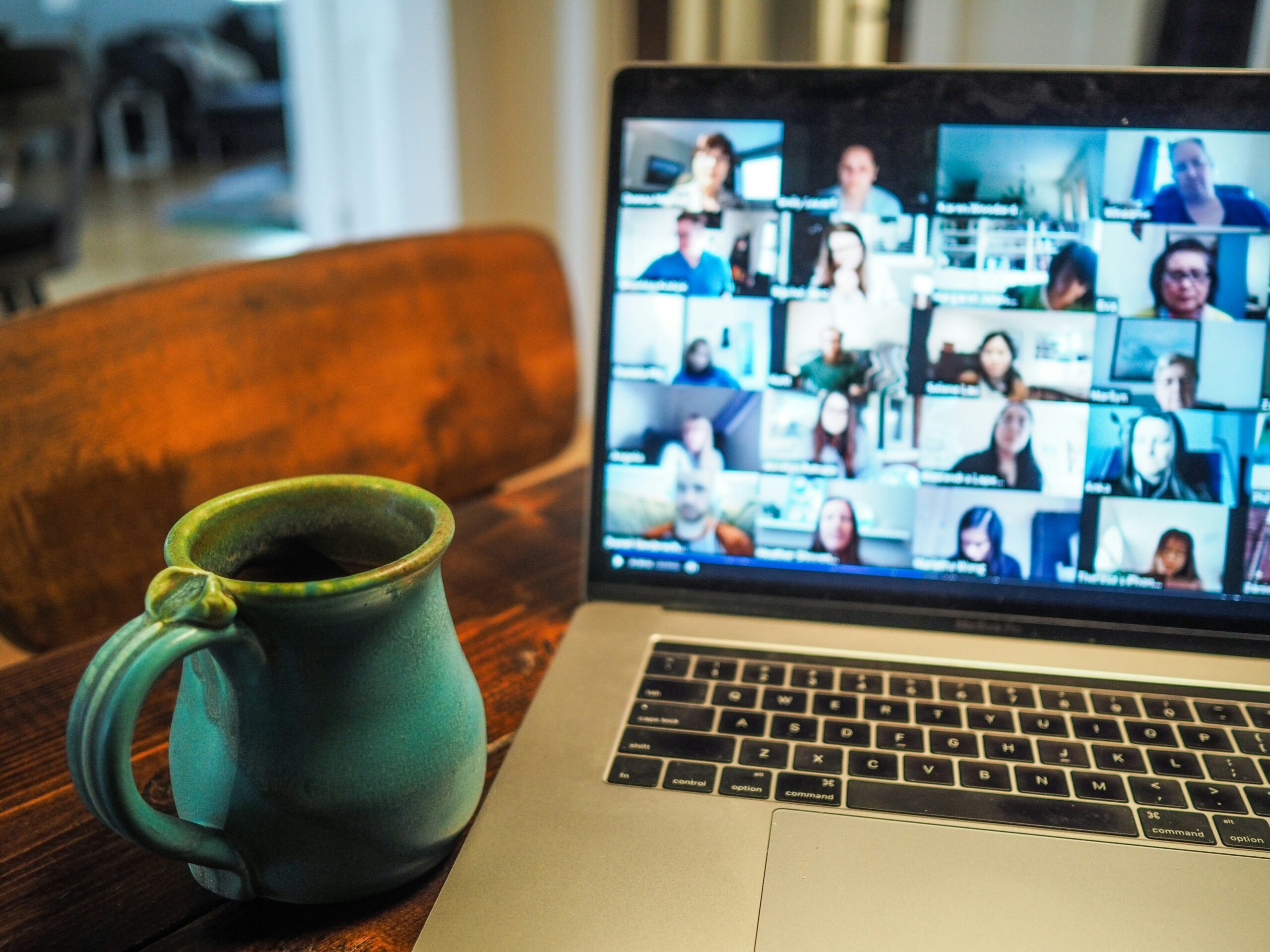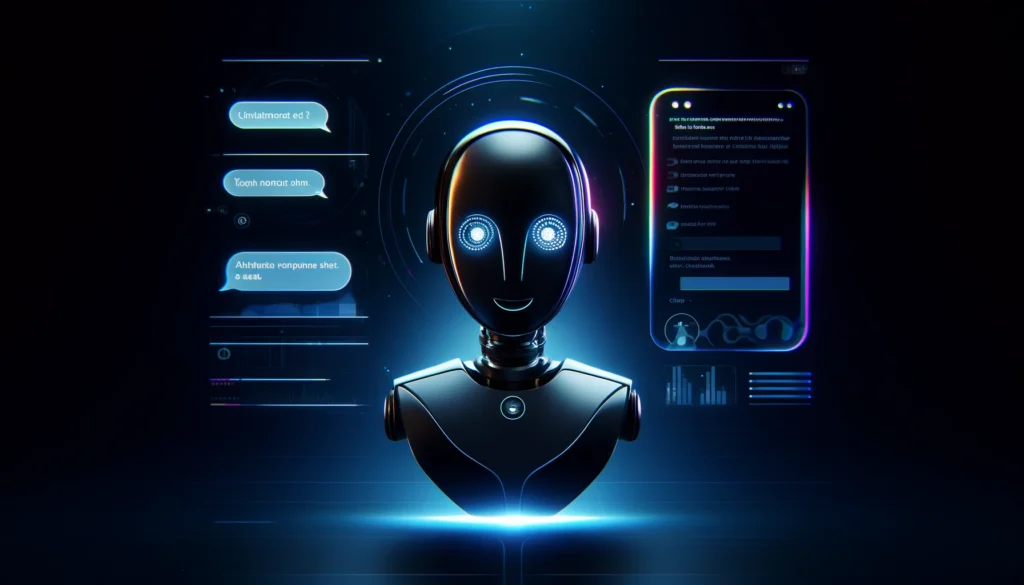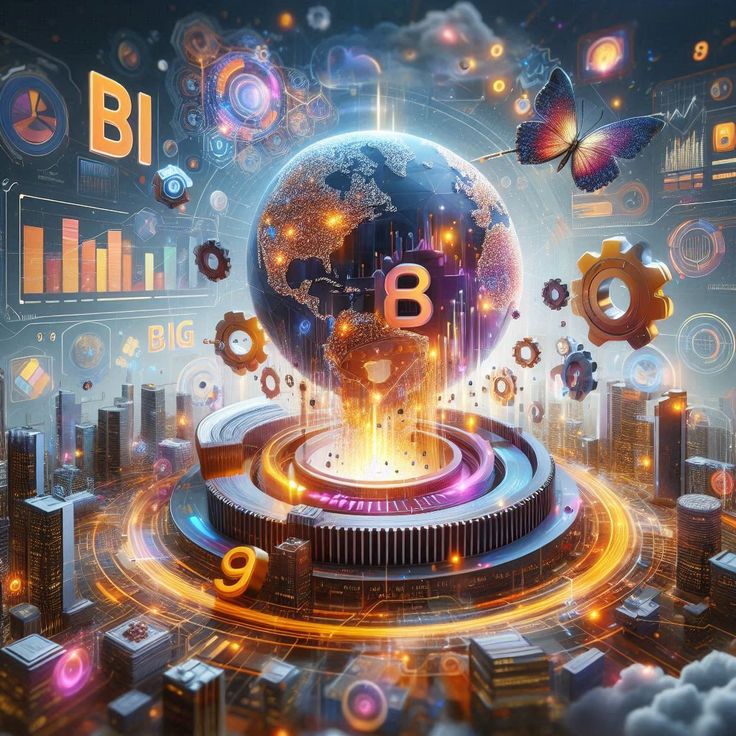The Future of Hiring: How Video Interview Bots are Revolutionizing Recruitment

Introduction to Video Interview Bots
In the swiftly evolving world of recruitment, video interview bots are emerging as pivotal tools for modern hiring processes. These AI-driven systems are designed to conduct video interviews autonomously, streamlining the recruitment pipeline and enhancing efficiency. Unlike traditional interview methods, video interview bots leverage artificial intelligence to assess candidates’ responses, analyze their facial expressions, and evaluate their verbal and non-verbal communication skills. This comprehensive analysis aids in forming a holistic view of a candidate’s suitability for a role.
The significance of video interview bots in the contemporary hiring landscape cannot be overstated. As businesses strive to optimize their recruitment processes, these automated systems offer a solution that saves time, reduces costs, and mitigates human bias. By handling the initial stages of candidate evaluation, video interview bots allow human recruiters to focus on more strategic tasks, such as refining job descriptions and enhancing candidate engagement. This shift not only accelerates the hiring timeline but also ensures that talent acquisition is more data-driven and objective.
Moreover, the adoption of video interview bots is becoming increasingly prevalent among enterprises of all sizes. With the advent of remote work and the need for socially distanced interactions, these bots provide a seamless and scalable way to conduct interviews. They enable organizations to handle a larger volume of candidates efficiently, which is particularly beneficial during periods of high demand or when filling multiple positions simultaneously. Additionally, candidates can complete interviews at their convenience, contributing to a more flexible and candidate-friendly experience.
As we delve deeper into how video interview bots are transforming recruitment, it is crucial to understand the underlying mechanisms and benefits of this technology. By embracing these innovations, businesses are not only enhancing their hiring processes but also positioning themselves at the forefront of a digital transformation in recruitment. This technological adoption signifies a significant leap towards more intelligent, efficient, and equitable hiring practices.
How Video Interview Bots Enhance the Hiring Process
Video interview bots are swiftly transforming the landscape of recruitment by streamlining and optimizing various stages of the hiring process. These advanced tools are capable of conducting initial candidate screenings, thereby allowing human recruiters to focus on more strategic and high-value activities. By leveraging artificial intelligence and machine learning, video interview bots can assess applicants’ skills, personalities, and competencies with remarkable precision.
One of the primary advantages of video interview bots is their ability to handle repetitive and time-consuming tasks. Traditionally, the initial screening phase involves sifting through numerous resumes and conducting preliminary phone interviews, which can be both labor-intensive and monotonous. Video interview bots, however, can automate these processes, quickly identifying candidates who meet the predefined criteria. This not only accelerates the hiring timeline but also ensures a more consistent and unbiased evaluation of all applicants.
Additionally, video interview bots are equipped with sophisticated algorithms to analyze various aspects of a candidate’s responses. They can evaluate verbal and non-verbal cues, such as tone of voice, facial expressions, and body language, providing a holistic view of the candidate’s suitability for the role. These insights help HR teams make more informed decisions and reduce the likelihood of unconscious biases affecting the hiring process.
Moreover, video interview bots offer the flexibility of asynchronous interviews, allowing candidates to complete their interviews at a convenient time and place. This can significantly enhance the candidate experience, as it alleviates the pressure of scheduling conflicts and time zone differences. For recruiters, this means a more extensive and diverse talent pool to choose from, as geographical limitations are minimized.
In essence, video interview bots serve as invaluable assets in modern recruitment strategies. By automating routine tasks, providing detailed candidate assessments, and enhancing the overall efficiency of the hiring process, these bots enable HR professionals to concentrate on strategic planning and talent development, ultimately leading to more effective and successful hiring outcomes.
The Technology Behind Video Interview Bots
Video interview bots represent a significant advancement in the recruitment process, leveraging a combination of cutting-edge technologies to streamline and enhance candidate evaluation. Central to their functionality are facial recognition technology, real-time conversation analysis, and natural language processing (NLP).
Facial recognition technology plays a crucial role in assessing a candidate’s non-verbal cues during an interview. By analyzing facial expressions, the technology can gauge the candidate’s emotions, stress levels, and sincerity. The software maps facial movements and correlates them with emotional states, providing recruiters with insights that go beyond verbal responses.
Real-time conversation analysis is another key component. This technology evaluates the content and context of the candidate’s spoken words during the interview. By monitoring speech patterns, tone, and pauses, it provides a comprehensive understanding of how the candidate communicates under pressure. This analysis can reveal traits such as confidence, clarity, and coherence, which are critical for many roles.
Natural language processing (NLP) is integral in understanding and interpreting the candidate’s responses. NLP algorithms parse the candidate’s language to identify key themes, sentiments, and the overall quality of the responses. This technology enables video interview bots to understand nuances in language, such as idiomatic expressions and varying speech patterns, ensuring a more accurate assessment of the candidate’s capabilities.
These technologies work in unison to create a holistic evaluation of each candidate. Facial recognition provides visual cues, conversation analysis offers vocal insights, and NLP deciphers the linguistic content. Together, they form a comprehensive profile that allows recruiters to make more informed decisions. By automating these aspects of the interview process, video interview bots not only save time but also reduce the inherent biases that can accompany human-conducted interviews.
Accuracy and Reliability of Video Interview Bots
Video interview bots have emerged as a transformative tool in the recruitment process, offering a new level of accuracy and reliability in assessing candidates. One of the primary metrics used to evaluate these systems is error rates. According to recent studies, video interview bots exhibit a significantly lower error rate in evaluating candidate responses compared to traditional human-led interviews. This is largely attributed to their algorithmic precision and ability to process large amounts of data quickly and consistently.
Bias detection is another crucial aspect of these innovative tools. Traditional hiring processes are often marred by unconscious biases, which can affect hiring decisions. Video interview bots, on the other hand, are designed to minimize such biases by evaluating candidates based on predetermined criteria, such as skill sets, experience, and qualifications. Research indicates that these bots reduce bias-related errors by up to 60%, making the hiring process more equitable and inclusive.
Consistency in evaluations is a hallmark of video interview bots. Unlike human interviewers who may have subjective interpretations and varying moods, bots provide uniformity in candidate assessments. This consistency ensures that every applicant is judged by the same standards, leading to a more fair and transparent recruitment process. A study conducted by the Institute of Employment Studies found that video interview bots have a consistency rate of over 90%, which is significantly higher than that of human interviewers.
However, video interview bots are not without their limitations. One of the primary concerns is the potential for technical glitches, which can affect the accuracy of evaluations. Additionally, while these bots are designed to minimize bias, they are only as unbiased as the data they are trained on. If the training data itself is biased, the bots may inadvertently perpetuate these biases. Furthermore, there is the issue of candidates’ comfort and familiarity with technology, which can impact their performance during the interview.
In conclusion, while video interview bots offer a high degree of accuracy and reliability in candidate assessments, it is essential to remain cognizant of their limitations. Ongoing improvements and vigilant monitoring are necessary to ensure these tools serve as effective and fair instruments in the recruitment process.
Comparing Video Interview Bots with Human Interviews
In the evolving landscape of recruitment, video interview bots and traditional human-led interviews each present distinct advantages and challenges. Video interview bots, leveraging artificial intelligence, offer a highly efficient and scalable solution for initial candidate screening. These bots can quickly process and evaluate numerous applications, significantly reducing the time recruiters spend on preliminary interviews. They ensure consistency in questioning and evaluation, which can mitigate unconscious bias and provide a more standardized candidate assessment.
Conversely, human interviews excel in areas requiring nuanced judgment and empathy. Experienced recruiters can gauge a candidate’s soft skills, cultural fit, and adaptability through dynamic, real-time interactions. These interviews allow for a more personalized approach, enabling interviewers to delve deeper into a candidate’s experiences and motivations.
However, video interview bots are not without their limitations. They primarily rely on pre-set algorithms and may struggle with understanding context or complex responses, potentially overlooking a candidate’s unique strengths. Additionally, candidates may find interacting with bots impersonal, which could impact their overall interview experience and perception of the company.
On the other hand, human interviews are resource-intensive, requiring significant time and manpower. They are prone to inconsistencies and subjectivity, which can lead to variability in candidate assessments. Human biases, though often unintentional, can also influence the outcome, potentially affecting the fairness of the hiring process.
In practice, the optimal approach often involves a hybrid model that leverages the strengths of both methods. Initial screenings conducted by video interview bots can efficiently filter out unsuitable candidates, allowing human recruiters to focus their efforts on more in-depth, personalized interviews with the most promising applicants. This combination can streamline the recruitment process, enhance candidate experience, and improve the overall quality of hires.
Time Efficiency and Scalability of Video Interview Bots
As businesses strive to stay competitive and agile, time efficiency in the recruitment process has become paramount. Video interview bots have emerged as a groundbreaking solution, significantly reducing the time required to hire new talent. One of the key advantages of these bots is their ability to conduct multiple interviews simultaneously. Unlike traditional methods that require human interviewers to dedicate time to each candidate, video interview bots can handle a large volume of interviews at once. This parallel processing capability drastically shortens the hiring timeline, enabling companies to fill positions much faster.
Beyond merely conducting interviews, video interview bots are adept at customizing the interview process to align with specific job descriptions and candidate profiles. By leveraging artificial intelligence and machine learning algorithms, these bots can tailor interview questions based on the candidate’s intelligence levels, job requirements, and even their engagement during the interview. This level of customization ensures that the interview process remains relevant and insightful, providing a comprehensive evaluation of each candidate’s suitability for the role.
Scalability is another crucial benefit of using video interview bots. As organizations grow and their hiring needs increase, the ability to scale the recruitment process becomes essential. Video interview bots can easily adapt to handle a surge in applications without compromising on the quality of the interviews. This scalability is particularly beneficial for companies experiencing rapid expansion or those with high-volume hiring seasons. By efficiently managing large pools of candidates, video interview bots help maintain a steady pipeline of qualified candidates, ensuring that businesses have access to the talent they need when they need it.
Moreover, the integration of data analytics with video interview bots provides actionable insights into the recruitment process. By analyzing candidate responses and engagement levels, companies can identify patterns and trends that inform future hiring strategies. This data-driven approach not only enhances the efficiency and effectiveness of the current hiring process but also contributes to continuous improvement in recruitment practices.
Popular Examples of Video Interview Bots
In the evolving landscape of recruitment, video interview bots have gained substantial traction. These intelligent tools streamline the hiring process by facilitating efficient and unbiased candidate assessments. Among the most prominent examples in the market are HireVue, Pymetrics, and Mya Systems, each offering unique features and benefits.
HireVue is a widely-recognized platform that leverages artificial intelligence to conduct video interviews. It analyzes candidates’ responses, facial expressions, and speech patterns to provide comprehensive insights into their suitability for the role. Companies like Unilever and Hilton have successfully integrated HireVue into their hiring processes, reporting significant reductions in time-to-hire and improved candidate experience. For instance, Unilever reduced its hiring time from four months to just two weeks, showcasing the platform’s efficiency.
Pymetrics, on the other hand, employs neuroscience-based games and AI to match candidates with suitable job roles. By focusing on cognitive and emotional attributes, Pymetrics ensures a more holistic evaluation of potential hires. Esteemed organizations such as Accenture and LinkedIn have adopted Pymetrics, benefiting from its ability to identify top talent while enhancing diversity and inclusion. Accenture, for example, noted a remarkable improvement in the quality of hires and a 20% increase in workforce diversity.
Mya Systems stands out with its AI recruitment chatbot that automates the initial stages of the hiring process. Mya engages with candidates through natural language processing, answering queries and scheduling interviews. L’Oréal and Adecco Group have successfully implemented Mya, witnessing enhanced candidate engagement and operational efficiency. L’Oréal reported that Mya reduced their screening time by 75%, allowing recruiters to focus on more strategic tasks.
These examples illustrate how video interview bots like HireVue, Pymetrics, and Mya Systems are transforming recruitment by offering robust, scalable, and inclusive solutions. Companies that have adopted these technologies highlight their positive impact on hiring efficiency, candidate experience, and overall recruitment outcomes.
Studies and References on Video Interview Bots
Over recent years, numerous studies have been conducted to examine the impact and effectiveness of video interview bots in the recruitment process. These studies have consistently highlighted both the advancements and benefits of utilizing artificial intelligence (AI) in hiring, while also addressing potential drawbacks.
One significant study by the Harvard Business Review found that video interview bots can reduce hiring biases, streamline the recruitment process, and improve the overall candidate experience. By eliminating human prejudice and standardizing interview questions, these bots ensure a more equitable evaluation of all applicants.
Similarly, research conducted by the Society for Human Resource Management (SHRM) indicates that video interview bots can accelerate the hiring timeline by up to 40%. The automation of initial screening interviews allows recruiters to focus on more strategic tasks, such as engaging with top-tier candidates and crafting a better employer brand.
However, not all feedback is entirely positive. A report from the Pew Research Center underscores potential drawbacks, such as the risk of over-reliance on technology, which could lead to a lack of personal touch in the hiring process. This concern is echoed by a study from the Massachusetts Institute of Technology (MIT), which suggests that while AI can significantly enhance efficiency, it should be complemented by human judgment to ensure a balanced approach to recruitment.
For those interested in further exploring the topic, the following articles provide valuable insights:






Responses